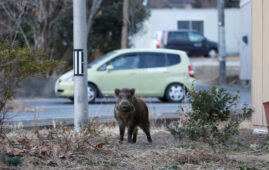



California officials aim to guard some of the toughest environmental standards in the nation against the Trump administration’s plan to cut clean air and water regulations.
But it’s probably not going to be easy.
California has set the standard in many areas of environmental protections, including the toughest regulations for car emissions and fuel economy. The state, with its population of 39 million, is large enough to wield significant clout in the market.
“For the past 50 years, California has led the country and the world when it comes to clean cars,” Margo Oge, who once directed the Office of Transportation and Air Quality at the Environmental Protection Agency, told The Washington Post.
But its progressive environmental standards rely on a kind of special dispensation from the federal government. The Clean Air Act gave the EPA authority to grant a waiver of national emissions standards to California if it enacted tougher regulations. Waivers were later granted to other states that adopted California’s standards instead of the less-stringent federal ones.
California’s cutting-edge rules helped buoy a national agreement by the Obama administration and the automobile industry that calls for cars to achieve an average of 54.5 miles per gallon by 2025.
The state has several other waivers for tougher environmental rules. In testimony last month before the Senate Committee on Environmental Quality, Richard Frank, director of the California Environmental Law & Policy Center, called the arrangement an example of “cooperative federalism.”
But California leaders fear that the administration of President Donald Trump, who leads a Republican Party that typically champions states’ rights, will move to yank California’s waiver on fuel economy — even though it’s supposed to be valid until 2025. The auto industry is already pressing for fuel-efficiency standards to be eased. Trade groups sent letters asking new EPA chief Scott Pruitt to review the fuel economy standards. Pruitt said at his confirmation hearings that he would review the standards — and California’s waiver.
California is expected to head straight to court if the Trump administration calls for easing the standards in the state.
It’s unclear when that clash might happen. The state has placed former U.S. Attorney General Eric Holder on retainer to take on court cases California expects to file against the federal government at some point.
One environmental rule that the administration swiftly dropped was the ban on using lead ammunition and fishing tackle in national parks and wildlife refuges. Lifting the ban was one of Interior Secretary Ryan Zinke’s first actions.
California plans to stick to its state ban, passed in 2013, a spokesman for the California Department of Fish and Wildlife told KQED Science. The law phases in a complete prohibition on lead hunting ammo in the whole state by 2019.
Lead bullets left in the environment or in carrion and prey can be ingested by other animals, causing neurological damage and death. Among those most at risk are eagles and the endangered California condor. As many as 20 million birds and other animals die of lead poisoning nationally each year because of the nearly 100,000 tons of lead that sportsmen use, according to the Center for Biological Diversity.


I keep writing about honeybees because.


Carlos Rafael, a Massachusetts fishing tycoon.


This video of a large dolphin.


Six years after the Fukushima Daichi.
Leave a Comment